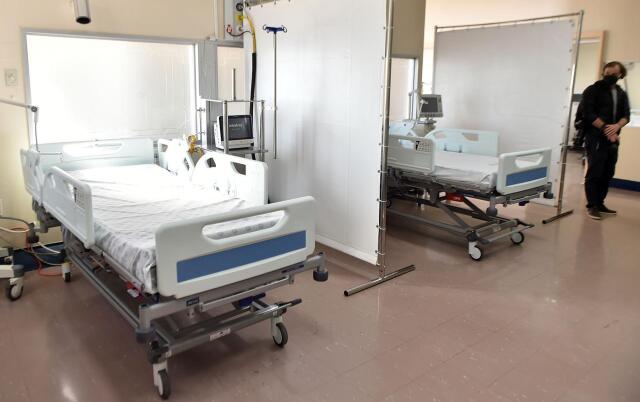Health Minister Dr Joe Phaahla has shared insight into South Africa’s preparedness for the fourth wave of Covid-19 infections.
HEALTH Minister Dr Joe Phaahla has shared insight into South Africa’s preparedness for the fourth wave of Covid-19 infections.
Phaahla spoke about bed capacity, ventilators and personal protective equipment (PPE).
The minister was responding to a written parliamentary question from the IFP’s Magdalena Hlengwa.
Hlengwa referenced Phaahla’s media briefing on November 12, where he informed the public that his department would ensure that there was an adequate supply of oxygen, ventilators, beds and PPE in light of the shortage of beds and oxygen during the third wave of Covid-19 infections.
Hlengwa asked Phaahla to provide a figure on the number of additional beds, ventilators and PPEs the department had estimated it would need nationally to overcome the impact of the fourth wave.
In his response, in relation to beds, Phaahla said the department had no plans to increase the number of beds from the current baseline it had.
“This is based on the fact that even during the third wave, which was the highest, the country never had a shortage of beds and oxygen that was required for the management of the Covid-19 pandemic,” Phaahla said.
To illustrate, Phaahla said that between July 12 and July 15, 2021, which was the highest point of the third wave, the country had the following hospitalisation breakdown:
- The total admissions in non-ICU beds was 14,319 out of a total of 108,805 general beds (13% bed occupancy)
- There were 2,423 admissions to ICU beds out of a total of 5,615 ICU beds (43% bed occupancy)
“This means that we have enough capacity based on the lessons learnt from the third wave, and as such there is no need to increase the number of beds,” Phaahla said.
As for additional ventilators, Phaahla said both private and public sector hospitals had received 14,292 ventilators from the Solidarity Fund. The devices were in the hospitals and approximately 7,000 had been used.
“This has left us with a strategic reserve in the event of an increase in the number of patients.
“The department has further received 5,708 of the additional ventilators which is the reserve that is kept in the National Department of Health for further deployment in the event of further pressure that may arise,” Phaahla said.
PPEs were the main consumable he said, and, as such, they were dependent on the rate of use.
Phaahla said the department had a system for monitoring the stock on hand, which alerted the department to areas of acute shortages.
“The department has a budget which will be used whenever the PPE reaches less than 70% at any given time,” Phaahla concluded.








